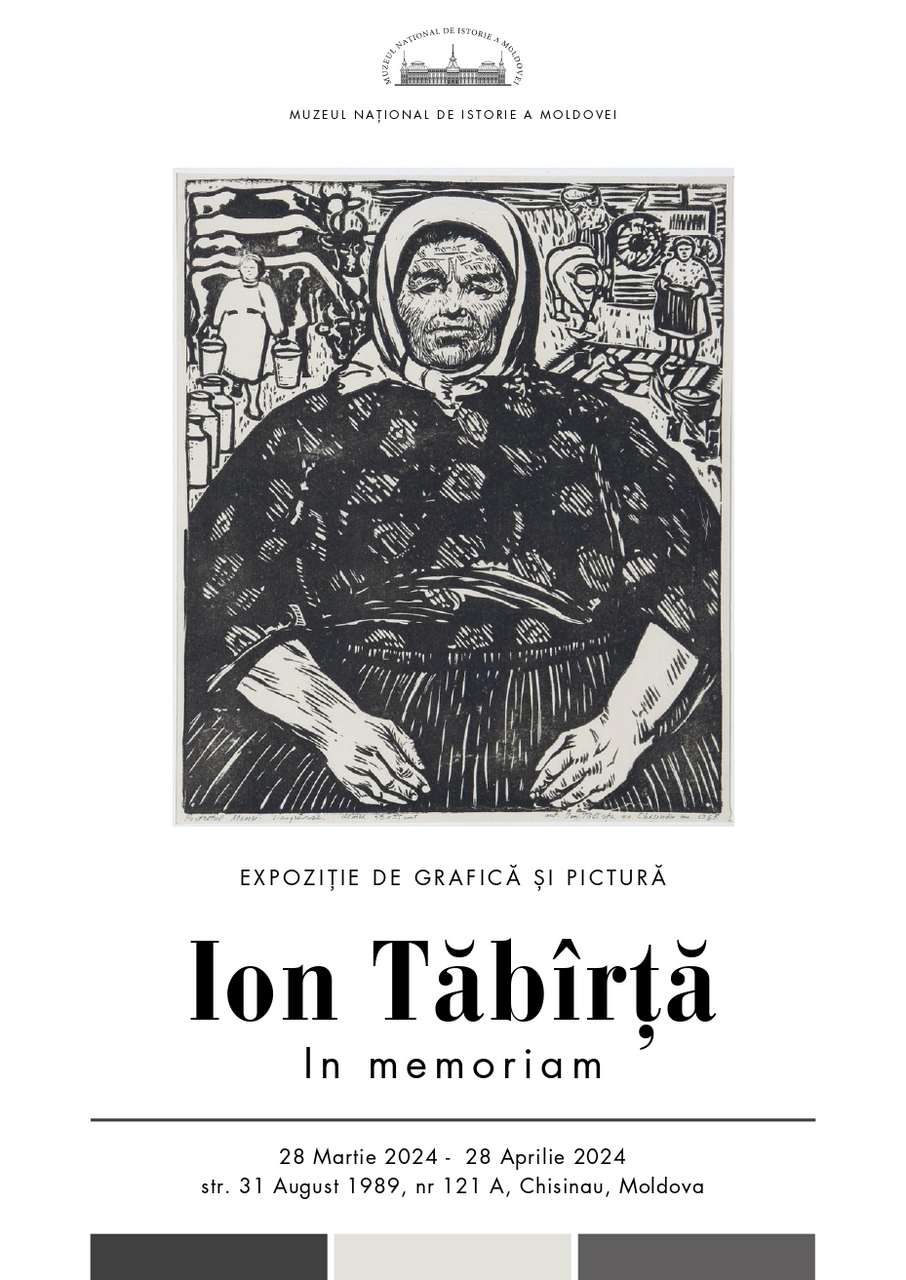 The National Museum of History of Moldova announces the opening of the graphic and painting exhibition "Ion Tâbîrță. In memoriam", which includes about 50 works of the visual artist, some of which are exhibited to the public for the first time. The opening of the exhibition will take place on March 28, at 16:00 in Hall 1.
The National Museum of History of Moldova announces the opening of the graphic and painting exhibition "Ion Tâbîrță. In memoriam", which includes about 50 works of the visual artist, some of which are exhibited to the public for the first time. The opening of the exhibition will take place on March 28, at 16:00 in Hall 1.
Ion Tăbîrță was born on August 2, 1930 in the village of Hlinaia, Slobozia, Republic of Moldova, in a peasant family. In the years 1937-1946 he studied at the school in his native village. In the years 1946-1951 he studied at the School of Fine Arts "I. Repin" from Chisinau (currently the Republican College of Fine Arts "Al. Plămădeala"). In the years 1951-1954 he was a painter within the Plastic Fund of the Union of Plastic Artists from Moldova. He studied at the Institute of Fine Arts in Kiev (1954-1960) in the class of the famous professor V. Casian, where he studied different graphic techniques: linocut, lithography, xylography, etchings, engraving on cardboard and others.
From 1960 to 1963 he was a teacher at the "I. Repin". In 1962, he became a member of the Union of Plastic Artists from Moldova, and actively participated in all exhibitions abroad. Since 1964 he has been a member of the board of directors of the Union of Plastic Artists from Moldova, and since 1968 he has been the president of the U.P.A. section. from Moldova. From 1962 until 1969, he was the director of the School of Plastic Arts for children "A. Sciusev" from Chisinau.
The artist carries out a fruitful activity as an organizer of education in the field of art. In 1969, the middle-boarding Republican School of Fine Arts opens (currently the "I. Vieru" Republican High School of Fine Arts). An indisputable merit in the organization of this high school belongs to I. Tăbîrță. In the years 1969-1977, he was director of the medium-boarding Republican School of Plastic Arts in Chisinau.
In the years 1977-1979 Ion Tăbîrță is the chief painter of the Plastic Fund of the U.P.A. from Moldova, and in 1979-1983 he was the head of the drawing and painting department of the Faculty of Fine Arts and Graphics of the "Ion Creangă" State Pedagogical Institute (currently the "Ion Creangă" Pedagogical University). In 1980, he was awarded the honorary title of Emeritus Worker of Culture from R.S.S.M.
In the years 1983-1988 he was the director of the National Museum of Plastic Arts of Moldova. In the years 1988-1990 he was director of the Republican High School of Fine Arts "I. Vieru". In 1990, he was awarded the honorary title "Teacher of the People of the Russian Federation". In the years 1990-1994 he was deputy director of the "I. Vieru".
During his activities, the painter creates series of works such as the series of paintings "At the tractor factory" which constitute almost 40 works, representing a chronicle of the factory, the series of linocuts: "Spring", "Maternity", "Peace", " We, the first" and other works in etchings: "Moldovians", "Bulgarians", "Blestem", "Pe costiș", "Mihai Eminescu" "Luceafărul", "A. Mateevici", "Spiritul nostru", "Lands of Moldova". Ion Tăbîrță also tackles the historical theme, creating faces of historical personalities: V. Lupu, D. Cantemir, and others. He works in the field of landscape, representing various places in the city of Chisinau. The artist also practices watercolor, performing a series of works in the cities of Câmpina, Timișoara (Romania) and Moșino (Ukraine).
The master's works have been exhibited in more than 20 countries, many works are in the collection of fine arts museums, art galleries in the Republic of Moldova and abroad.
Exhibition of graphics and painting "Ion Tâbîrță. In memoriam" can be visited between March 28 - April 28, 2024, in Hall 1 of the National Museum of History of Moldova, Chisinau, str. 31 August 1989, 121A.

















































